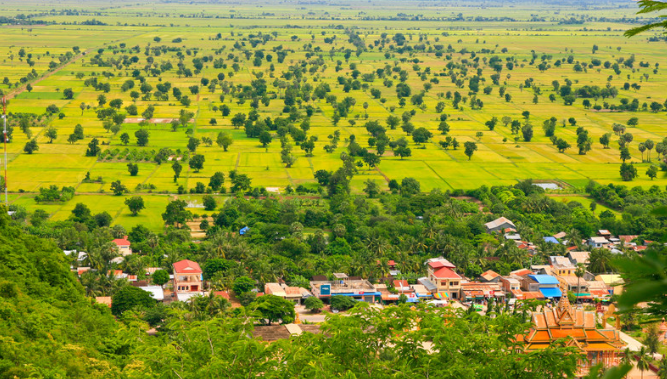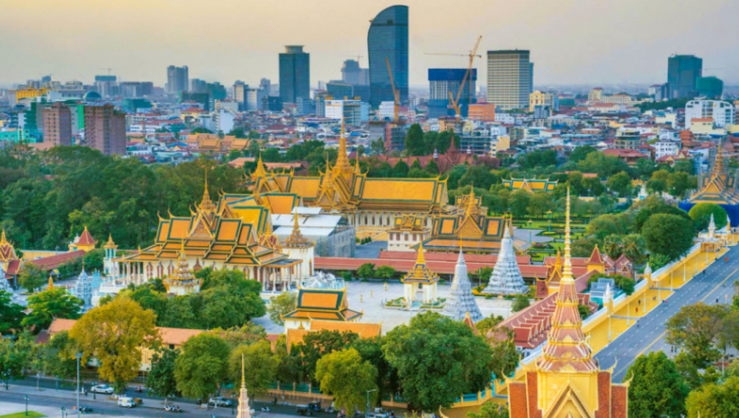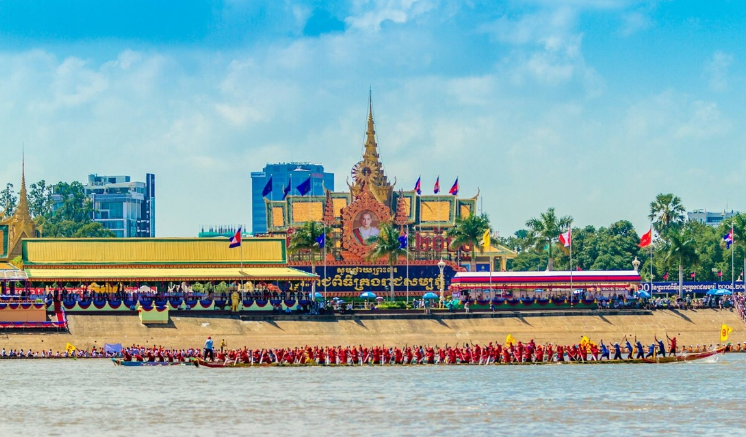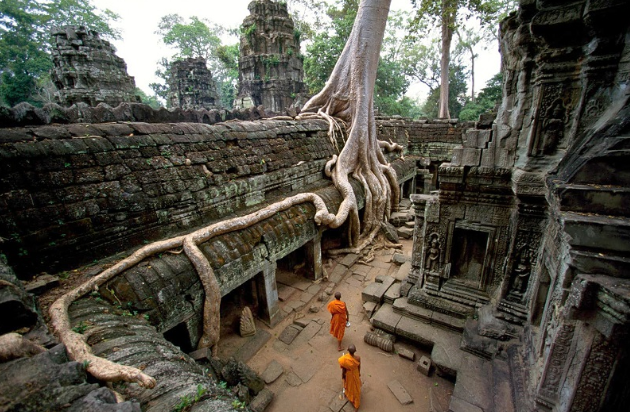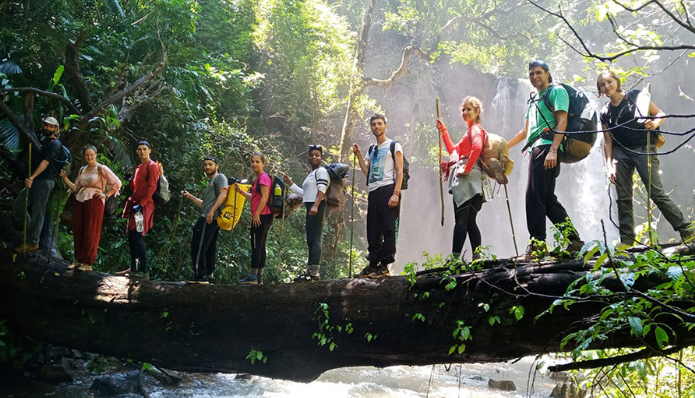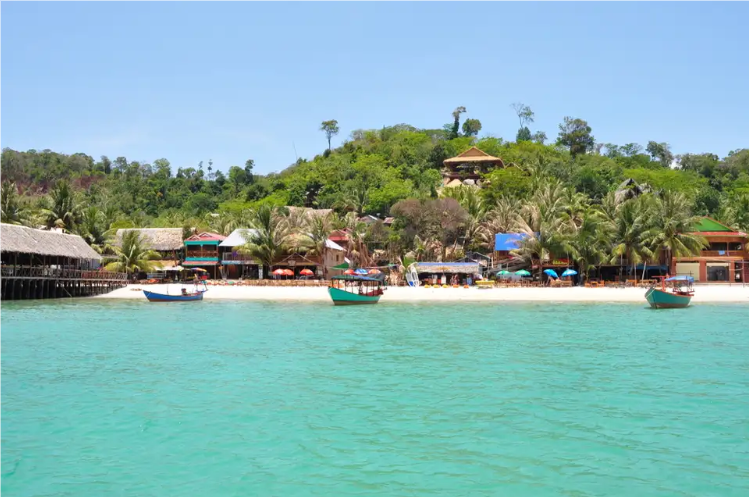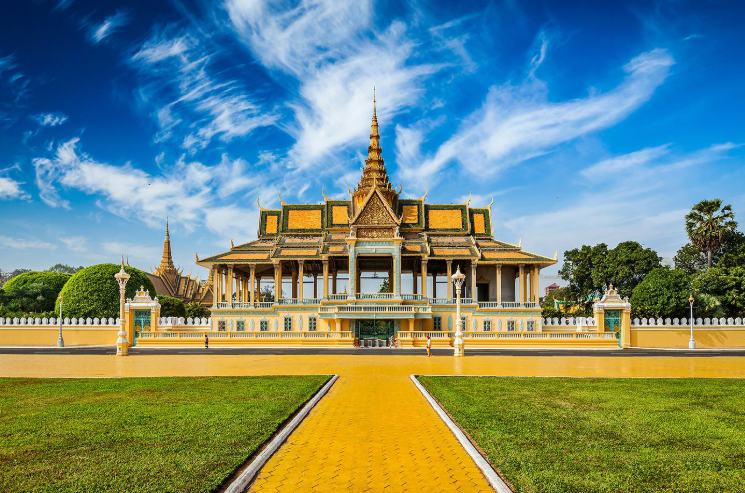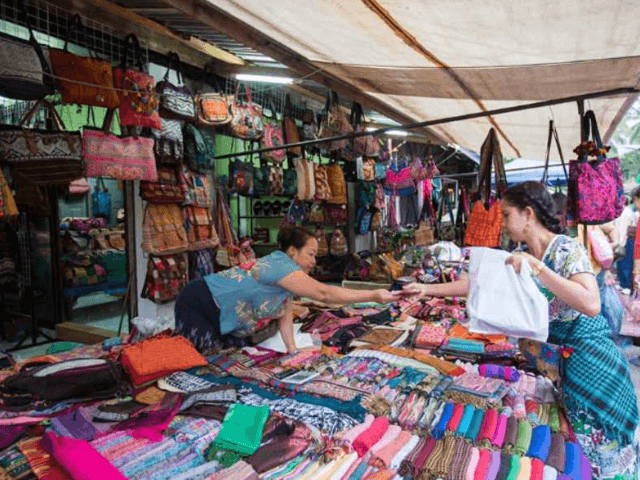If you have the opportunity to set foot of the land of pagodas and towers , please keep in mind the information about the best time to join the Cambodia holiday.
TABLE OF CONTENTS
1
Best Time to Travel to Cambodia for Your Holiday
2
Overview: When Is the Best Time to Visit Cambodia?
3
Cambodia’s Climate and Seasonal Variations
Why Timing Matters for the Best Travel Experience
4
Peak Season (November - March): The Ideal Time to Visit
5
Cool, Dry Weather Perfect for Sightseeing and Outdoor Activities
Best Months for Exploring Angkor Wat, Phnom Penh, and Coastal Areas
Popular Festivals: Khmer New Year and Bon Om Touk
6
7
Shoulder Season (April - June & September - October): A Balance of Weather and Fewer Crowds
April to June: Hot Season, But Rich in Culture and Less Crowded
September to October: End of the Monsoon, Lush Scenery, and Budget-Friendly Travel
8
9
Low Season (July - August): Green Season Travel
Rainy Season Pros: Fewer Crowds, Budget-Friendly Travel, and Stunning Greenery
Best Regions to Visit Despite the Rain
10
11
Best Time Based on Travel Preferences
For Sightseeing & Temples - November to March (Cool, Dry Weather)
For Beach Lovers - November to May (Koh Rong and Sihanoukville at Their Best)
For Budget Travelers - May to October (Discounted Rates and Fewer Tourists)
12
13
Conclusion: Choosing the Right Time for Your Cambodia Trip
Recap of the Best Months Based on Different Travel Styles
Encouragement to Plan Ahead for the Best Experience
Best Time to Travel to Cambodia for Your Holiday
Cambodia is a land of timeless temples, golden sunsets, and vibrant culture. Whether you’re dreaming of wandering through the ancient ruins of Angkor Wat or relaxing on a quiet tropical beach, timing your trip right can make your experience unforgettable. So when is the best time to travel to Cambodia for your holiday? Let’s break it down by understanding the country’s climate and seasonal patterns.
Overview: When Is the Best Time to Visit Cambodia?
Cambodia’s Climate and Seasonal Variations
Cambodia has a tropical monsoon climate, which means it’s warm throughout the year, but the weather varies depending on the season. The country mainly experiences two seasons: the dry season and the rainy season.
The dry season lasts from November to April, and it’s the most popular time for tourists to visit. During these months, the weather is typically sunny, dry, and comfortable, especially from November to February. These are the coolest months of the year, with temperatures ranging from 25°C to 30°C. It’s the perfect time for outdoor activities, temple visits, and cultural exploration.

From March to April, the heat intensifies, with temperatures often climbing above 35°C. While it’s still part of the dry season, it can feel extremely hot during the day. If you're visiting in this period, it’s best to plan sightseeing early in the morning or late in the afternoon to avoid the midday sun.
The rainy season in Cambodia runs from May to October. This period is marked by brief, heavy showers, often in the afternoon or evening. Despite the rain, mornings are usually clear and fresh. The countryside becomes lush and green, creating stunning landscapes that photographers and nature lovers will appreciate.
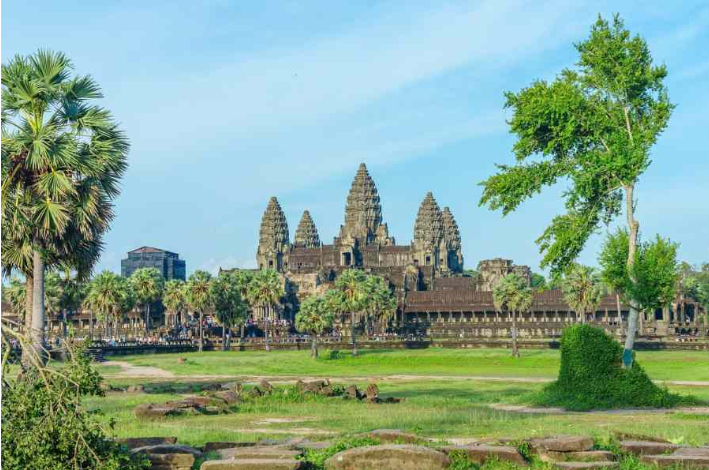
Traveling during the rainy season also means fewer tourists and lower prices for hotels and tours. It’s a great choice if you prefer a quieter, more budget-friendly holiday-just be prepared for occasional downpours and some muddy roads, especially in rural areas.
Why Timing Matters for the Best Travel Experience
Choosing the right time to visit Cambodia can significantly enhance your trip. If you're planning to explore iconic attractions like Angkor Wat, the cooler and drier months will allow for more comfortable, crowd-free early morning visits. Trekking through jungles, cycling around temples, or even just walking around local markets is much more enjoyable when the weather is on your side.
On the other hand, if you’re looking for a more peaceful and budget-friendly getaway, the rainy season might be surprisingly rewarding. Hotels and tours often offer discounts, and you'll have a more authentic, local experience without the high-season tourist hustle.
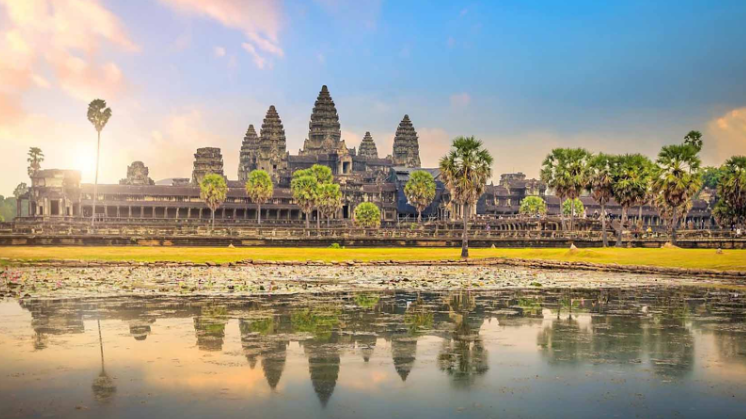
In short, whether you prioritize weather, crowd levels, photography opportunities, or travel costs, timing your trip wisely will help you unlock the best version of Cambodia for your holiday.
Peak Season (November - March): The Ideal Time to Visit
If you're looking for the absolute best time to travel to Cambodia, the months from November to March are hard to beat. Known as the peak season, this period offers the most favorable weather conditions across the country-cooler temperatures, low humidity, and sunny skies-making it the perfect window for everything from temple trekking to island hopping. It’s also the time when Cambodia comes alive with vibrant festivals, rich culture, and bustling tourism energy.
Cool, Dry Weather Perfect for Sightseeing and Outdoor Activities
Cambodia’s peak season falls right in the heart of the dry season. After the rains of the monsoon months subside in late October, the country enters a phase of cooler, breezier days that are ideal for outdoor exploration. Temperatures during this time typically range from 25°C to 30°C, offering a refreshing break from the extreme heat and humidity that follows in the later months.
Whether you're wandering the sprawling temple complex of Angkor Wat, biking through the countryside in Battambang, or taking a slow boat down the Mekong River, the dry weather enhances every moment. The roads are dry and easily accessible, national parks are open and green from recent rains, and the cooler evenings invite long walks, night market visits, and riverside dinners.
Photographers will also love this season. The skies are clear, the lighting is golden, and early mornings or late afternoons provide stunning natural backdrops for your travel shots.
Best Months for Exploring Angkor Wat, Phnom Penh, and Coastal Areas
This is the prime time to explore Angkor Wat and the surrounding Angkor Archaeological Park in Siem Reap. Visiting in the early morning not only allows you to catch the breathtaking sunrise behind the temple’s iconic towers but also helps you avoid the midday heat and crowds. During these cooler months, you can easily spend entire days walking or cycling between temples without being drained by the weather.
Phnom Penh, the country’s vibrant capital, is also at its most welcoming. With the riverside promenade full of life, open-air cafes buzzing, and major landmarks like the Royal Palace, Silver Pagoda, and Tuol Sleng Genocide Museum accessible and less stifling to explore, the dry season transforms city exploration into a real pleasure.
If you're dreaming of sun and sea, Cambodia’s southern coastline-from the laid-back beaches of Kep to the island paradises of Koh Rong and Koh Rong Samloem-truly shines during this period. The waters are crystal-clear and calm, ferry connections run reliably, and island life is at its most beautiful and carefree. Whether you want to swim, snorkel, dive, or simply relax in a hammock by the sea, the peak season delivers perfect beach weather.
Popular Festivals: Khmer New Year and Bon Om Touk
Traveling during the peak season also gives you a chance to immerse yourself in Cambodia’s rich cultural life through its most celebrated festivals.
In November, Cambodia celebrates Bon Om Touk, also known as the Water Festival. This grand three-day event marks the reversal of the flow of the Tonlé Sap River and is celebrated with traditional long-boat races, music performances, and fireworks, especially in Phnom Penh. It’s a time of national pride and togetherness, and joining in the festivities is a great way to connect with local culture.
Then in April, although temperatures rise sharply, Cambodia throws its most vibrant celebration of the year-Khmer New Year. Lasting several days, this holiday marks the end of the traditional harvest season and the beginning of a new year in the Khmer calendar. Streets become joyful battlegrounds for water fights, people visit pagodas to make offerings, and families gather for games and rituals. If you don’t mind the heat, being in Cambodia during Khmer New Year is an unforgettable, joy-filled experience.
Shoulder Season (April - June & September - October): A Balance of Weather and Fewer Crowds
If you're looking to strike a balance between pleasant weather, affordable prices, and fewer tourists, Cambodia’s shoulder seasons-from April to June and September to October-may be your best bet. Though not as postcard-perfect as peak season, these transitional months offer unique advantages, especially for travelers who want a more authentic, local experience with greater flexibility.
April to June: Hot Season, But Rich in Culture and Less Crowded
April marks the beginning of Cambodia’s hot season, when temperatures can soar up to 35°C or higher, especially in central and southern regions. While the heat can be intense, this period offers dramatically fewer tourists, meaning you’ll have many of Cambodia’s top attractions to yourself.
Visiting Angkor Wat or Ta Prohm during this time means shorter lines, emptier temples, and a much more tranquil atmosphere for reflection and photography. Just be sure to start early in the morning and take breaks during the hottest part of the day. Many travelers choose to explore in the morning, relax in shaded cafes or by the pool in the afternoon, then return for evening activities once the sun has softened.
Despite the heat, April also brings Khmer New Year (Choul Chnam Thmey)-one of the most energetic and joyful festivals in Cambodia. Water fights in the streets, traditional games, and temple visits create a unique cultural immersion. You’ll witness the heart of Cambodian life, full of color, laughter, and community spirit.
May and June, while still hot, sometimes bring the first scattered rains, which can cool down the afternoons and refresh the air. The landscape begins to shift from dry and dusty to slightly greener, and prices for accommodation and tours drop considerably. If you’re comfortable with heat and want to travel smart on a budget, this is a golden window.
September to October: End of the Monsoon, Lush Scenery, and Budget-Friendly Travel
By September, Cambodia is in the final stretch of the monsoon season. Although rains are still frequent-especially in the late afternoons-they tend to be short, heavy bursts rather than all-day downpours. The benefit? The country’s natural scenery is at its absolute greenest and most vibrant.
Rice paddies glow with emerald hues, rivers are full and flowing, and the air is clean and cool compared to the peak summer heat. This period is especially ideal for photographers, nature lovers, and travelers who enjoy peaceful surroundings.
In Siem Reap, Battambang, and rural provinces, you’ll experience Cambodia’s countryside in full bloom. Tours during this time feel more intimate, with far fewer crowds. It’s also an excellent season for slow travel-taking your time in one place, chatting with locals, and soaking in the rhythm of daily life without rushing from site to site.
Another plus? Lower travel costs. Many hotels and tour operators offer deep discounts to attract off-peak travelers, meaning you can enjoy high-quality experiences at a fraction of the peak season price.
However, it’s still important to plan ahead-bring waterproof gear, check road accessibility if you're heading to more remote areas, and allow for some schedule flexibility in case of sudden showers.
Low Season (July - August): Green Season Travel
While many travelers shy away from Southeast Asia during the rainy season, the low season in Cambodia, which falls in July and August, has its own unique charm. Often referred to as the "Green Season", this period transforms the landscape into a lush, vibrant paradise. And for those willing to embrace the occasional downpour, it’s a rewarding time to explore the Kingdom of Wonder with fewer crowds, lower prices, and a more intimate cultural experience.
Rainy Season Pros: Fewer Crowds, Budget-Friendly Travel, and Stunning Greenery
The rains during Cambodia’s monsoon season are typically short and predictable, often arriving in the late afternoon or evening, leaving most of the day dry and perfectly enjoyable. Morning excursions, temple visits, and countryside trips can still go smoothly-just remember to pack a lightweight rain jacket or umbrella.
One of the biggest perks of traveling during this time is the lack of crowds. Major attractions like Angkor Wat are refreshingly quiet, giving you space to explore the ruins without the usual tourist buzz. This is an ideal time for reflective travelers, photographers, and anyone seeking a more authentic connection with the country.
In addition, hotels, resorts, and tour operators often offer deep discounts to attract off-season visitors. This means you can experience boutique accommodations, private tours, and longer stays for a fraction of the cost during the high season.
Nature lovers will be especially enchanted. The countryside is at its greenest and most photogenic, with lush rice paddies, full rivers, and blooming lotus ponds creating postcard-perfect scenes. Rural adventures-like boat rides, jungle treks, or village homestays-become even more beautiful under the emerald canopy of the rainy season.
Best Regions to Visit Despite the Rain
Despite the seasonal showers, many parts of Cambodia remain highly accessible and enjoyable in July and August. In fact, some even shine brighter during the green season.
- Siem Reap: Home to the legendary Angkor temples, Siem Reap is still a highlight during this time. The surrounding jungle and temple grounds look incredibly mystical in the misty rain, and early mornings often bring cooler air and soft golden light-ideal for sightseeing and photography. The floating villages on Tonlé Sap Lake also come alive as the water levels rise.
- Phnom Penh: Cambodia’s capital is a great low-season destination, as most of its main attractions are indoor or covered, including the Royal Palace, National Museum, and Tuol Sleng Genocide Museum. Rain showers often drive locals and travelers alike into cozy cafes, riverside bars, and indoor markets, making it a great time to experience the city’s creative and culinary scenes.
- Koh Rong and the Islands: While ferry schedules can sometimes be impacted by weather, Cambodia’s southern islands are still accessible and often serenely beautiful during the rainy season. Between the brief storms, you’ll enjoy warm ocean waters, empty beaches, and verdant island landscapes. The rain tends to keep party crowds away, making it a peaceful escape for those seeking solitude or romance.
Best Time Based on Travel Preferences
Cambodia is a year-round destination, but the best time to travel really depends on what kind of experience you're looking for. Whether you’re a history buff, a beach bum, a bargain hunter, or a nature lover, each season offers something special. Here’s a closer look at the ideal months based on your travel style.
For Sightseeing & Temples - November to March (Cool, Dry Weather)
If your main goal is to explore Cambodia’s stunning temples and cultural landmarks, the cool and dry season from November to March is hands-down the best time to visit. During these months, temperatures are comfortable (typically around 25-30°C), skies are clear, and humidity is low-perfect conditions for long days of sightseeing.
This is the prime time to wander through the temples of Angkor, cycle around Siem Reap, explore the Royal Palace in Phnom Penh, or take a day trip to Battambang. Sunrise and sunset moments at Angkor Wat are especially breathtaking during this period, thanks to the crisp air and pastel-colored skies.
Keep in mind, this is also Cambodia’s peak tourist season, so book your accommodations and tours in advance if you’re planning a holiday during these months.
For Beach Lovers - November to May (Koh Rong and Sihanoukville at Their Best)
Dreaming of white-sand beaches, turquoise waters, and laid-back island life? The coastal regions of Cambodia, including Koh Rong, Koh Rong Samloem, and Sihanoukville, shine brightest from November to May.
This is when the weather is warm and sunny, with minimal rainfall-ideal for swimming, snorkeling, diving, or simply relaxing with a coconut in hand. The islands are less developed than those in neighboring Thailand, offering a more tranquil and unspoiled tropical vibe.
January to March is particularly beautiful, with calm seas and perfect beach days. You’ll find everything from luxury resorts to budget bungalows, especially on Koh Rong Samloem, which remains a quieter and more nature-focused island.
For Budget Travelers - May to October (Discounted Rates and Fewer Tourists)
Traveling on a budget? The low and shoulder seasons, spanning from May to October, are a smart choice. During these months, you’ll find significant discounts on hotels, tours, and flights, especially in major tourist hubs like Siem Reap and Phnom Penh.
With fewer tourists around, you’ll enjoy a more peaceful travel experience, be it walking through ancient ruins, chatting with locals at a night market, or enjoying a river cruise. Just be prepared for occasional showers, especially in the late afternoons, and pack accordingly.
This is also a great time for slow travelers who want to dig deeper into Cambodian culture without the rush of crowds or high-season prices.
For Adventure Seekers - July to October (Lush Jungles, Waterfalls, and Fewer Crowds)
If you’re drawn to nature, off-the-beaten-path travel, and don’t mind a bit of rain, July to October offers Cambodia at its most wild and wonderful. The rainy season revives the country’s landscape, turning jungles rich green, rivers fuller, and waterfalls more powerful.
Trekking in areas like the Cardamom Mountains, visiting wildlife sanctuaries, or exploring hidden temples becomes more adventurous and rewarding. This is also a fantastic time to explore Cambodia’s floating villages, as water levels on Tonlé Sap Lake are high, allowing deeper access into rural communities by boat.
Plus, the overcast skies and lush backdrop make for some truly striking travel photography-minus the tourist crowds.
Conclusion: Choosing the Right Time for Your Cambodia Trip
Recap of the Best Months Based on Different Travel Styles
From serene temple tours to sun-soaked beach escapes, Cambodia offers something for every type of traveler-each best enjoyed at a specific time of year. The dry and cool months from November to March are perfect for sightseeing and cultural exploration, offering the most comfortable weather for long days outdoors. Beach enthusiasts will find their paradise between November and May, when the coastal regions are bathed in sunshine. For those traveling on a tighter budget, the off-season months from May to October provide attractive discounts and quieter attractions. And if you're drawn to nature and off-the-beaten-path adventures, the rainy season from July to October reveals Cambodia at its most lush and vibrant.
Encouragement to Plan Ahead for the Best Experience
To truly make the most of your trip, it’s important to align your travel goals with the country’s seasonal rhythms. Planning ahead allows you to secure better deals, avoid crowds during peak times, and ensure you experience Cambodia in the way that resonates most with you-whether that means standing in awe before Angkor Wat at sunrise, lounging on a quiet beach, or trekking through misty mountains. Cambodia’s charm is timeless, but your travel experience will feel all the more magical when you choose the right moment to go. So take the time to plan thoughtfully, and let your Cambodian journey unfold with ease and wonder.








